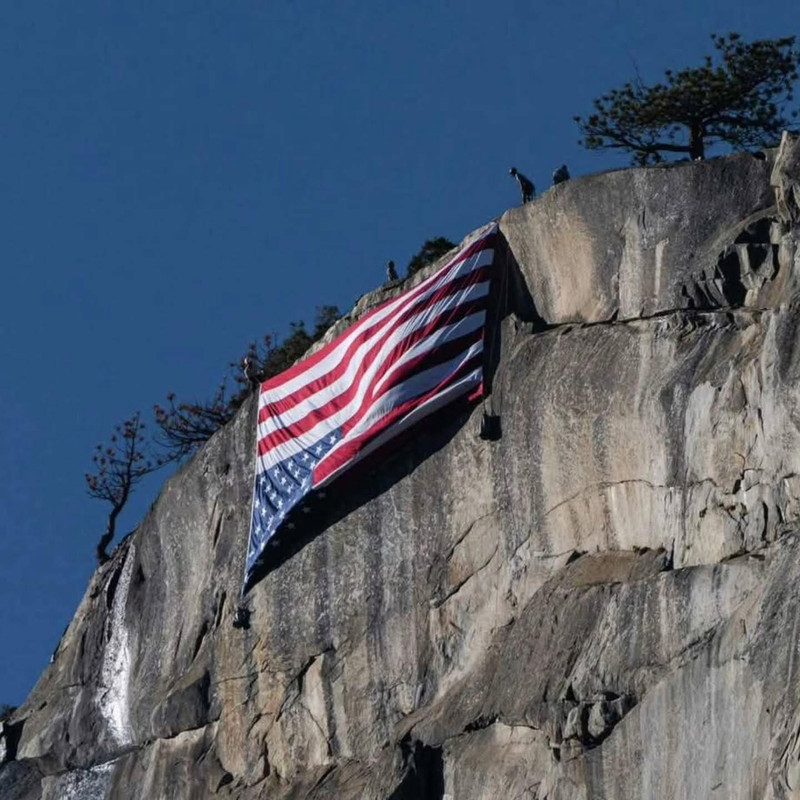If you were in Yosemite National Park last weekend, you might have noticed an unusual sight: the American flag hanging upside down from the towering cliffs of El Capitan. This striking image wasn’t just a random act—it was a deliberate signal of distress, meant to draw attention to the growing concerns among National Park Service employees.
The upside-down flag is a powerful symbol, recognized under the U.S. Flag Code as a sign of “dire distress in instances of extreme danger to life or property.” According to reports, a group of Yosemite employees hung the flag in this manner to protest recent job cuts within the National Park Service. The Trump administration’s decision to eliminate approximately 1,000 positions has left many employees feeling uncertain about their futures and the future of the parks they serve.

The flag’s placement on El Capitan, one of the most iconic landmarks in the U.S., was a bold statement. It highlighted the frustration and anxiety felt by those who dedicate their lives to preserving the nation’s natural treasures. The employees’ protest also comes amid broader concerns about the administration’s approach to environmental policies and federal workforce management.
The upside-down flag has sparked a mix of reactions, from support to criticism. Some see it as a necessary call for attention to the challenges facing public servants, while others view it as a disrespectful gesture. Regardless of where one stands, the act has undeniably succeeded in starting a conversation about the state of the National Park Service and the pressures it faces under current leadership.
As the U.S. continues to navigate a period of political and social upheaval, symbols like the upside-down flag serve as reminders of the deep divisions and concerns within the country. For the employees of Yosemite and other national parks, it’s a plea for recognition and support during a time of uncertainty.


